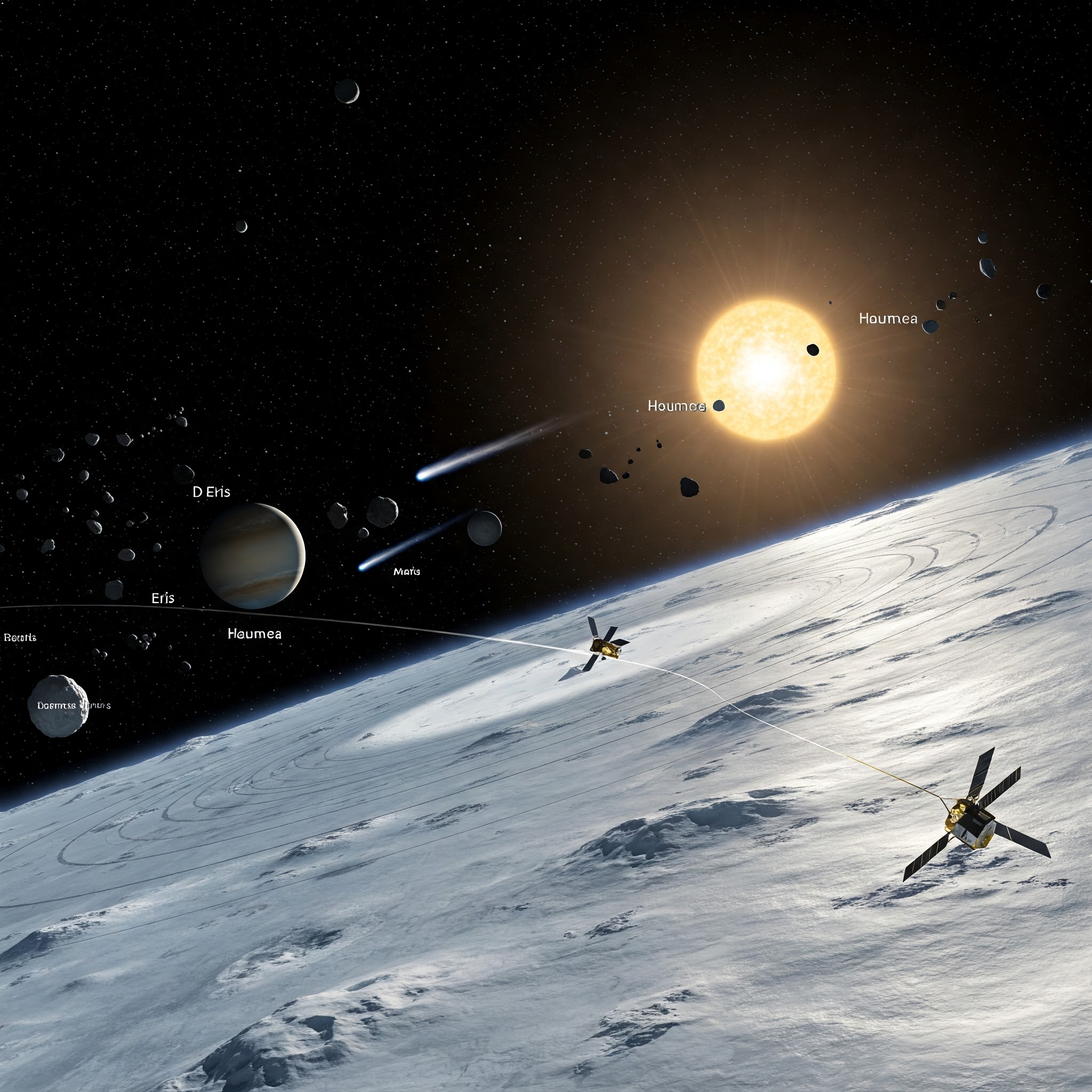The Kuiper Belt is one of the most mysterious and unexplored regions of our solar system. Located beyond Neptune, this icy expanse is home to thousands of objects, including dwarf planets, comets, and other small bodies. But what exactly is the Kuiper Belt, and why should we care about it?

1. What Is the Kuiper Belt?
The Kuiper Belt is a vast region of space that extends from Neptune’s orbit (about 30 AU from the Sun) out to roughly 50 AU (astronomical units). It is similar to the asteroid belt, but much larger and far beyond the familiar planets of our solar system.
The Kuiper Belt is composed of icy objects, including:
-
Dwarf planets like Pluto
-
Comets (short-period comets that come from this region)
-
Numerous small icy bodies that are remnants from the early solar system
2. Why Is the Kuiper Belt Important?
The Kuiper Belt is thought to be the birthplace of many short-period comets. Studying it can give scientists insight into the formation of the solar system.
It is also home to dwarf planets like Pluto, Haumea, Makemake, and Eris. These objects may have characteristics similar to planets, yet they are considered too small to be classified as such.
By studying the Kuiper Belt, we can:
-
Learn more about the early solar system’s formation
-
Understand the dynamics of icy bodies and their role in planet formation
-
Discover new worlds, perhaps even unlocking the mysteries of our solar system’s outer reaches
3. The Role of Space Missions
NASA’s New Horizons mission, which flew by Pluto in 2015, provided the first close-up images of Pluto and some objects in the Kuiper Belt. After its successful Pluto flyby, the spacecraft continued its journey deeper into the Kuiper Belt.
New Horizons is set to explore more objects in the Kuiper Belt, providing valuable data about this distant region.
4. What Are the Challenges of Kuiper Belt Exploration?
Exploring the Kuiper Belt presents numerous challenges:
-
The distance: The objects in this region are far away, and even the fastest spacecraft can take years to reach them.
-
Harsh conditions: Temperatures in the Kuiper Belt are incredibly low, making it difficult to operate spacecraft and instruments.
-
Lack of sunlight: The further we get from the Sun, the less sunlight is available to power spacecraft or light up objects in this dark region of space.
Despite these challenges, advances in space technology and exploration continue to make Kuiper Belt exploration possible.
5. What’s Next for Kuiper Belt Exploration?
After New Horizons, other missions are being planned to continue exploring the outer solar system. One such mission, LUVOIR (Large Ultraviolet/Optical/Infrared Surveyor), could provide detailed imaging of distant objects in the Kuiper Belt and beyond.
Scientists are also looking into more advanced spacecraft and instruments capable of gathering data on the mysterious worlds at the edges of our solar system.
Conclusion
The Kuiper Belt remains one of the most unexplored and enigmatic regions of our solar system. As technology advances, we are likely to uncover more secrets about the icy bodies that inhabit this distant frontier. Who knows what we might discover next—perhaps the next Pluto, or even an entirely new class of objects in the vastness of space?


